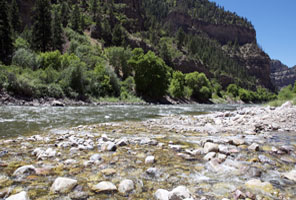Colorado River Sustainability Requires Balancing Supply and Demand for Water Resources and Responsible Hydropower
via American Rivers
By Matt Niemerski
Director, Western Water Policy
June 15, 2012
 Thirty million people in the Southwest use the Colorado River’s water for their material sustenance; millions more use the river itself for recreation and spiritual enjoyment. The river quenches our thirst, feeds our souls, and enlivens our senses.
Thirty million people in the Southwest use the Colorado River’s water for their material sustenance; millions more use the river itself for recreation and spiritual enjoyment. The river quenches our thirst, feeds our souls, and enlivens our senses.
We are not the only inhabitants using this river. Its waters and canyons provide a vibrant but deeply threatened ecosystem for untold numbers of plant and animal species. These competing demands make the Colorado River one of the most contested and controlled rivers on Earth. Over the last decade, humans have drained all of the river’s water – all 5 trillion gallons – before it reaches the Sea of Cortez.
The U.S. Bureau of Reclamation is the second-largest producer of hydropower in the United States. Last week, Reclamation Commissioner Michael Connor discussed regulatory and policy hurdles facing hydropower and how the Bureau of Reclamation is planning for a possible water crisis.
States in the Western U.S., and particularly in the Colorado River Basin, will face an unprecedented water supply crisis in the coming decades. Extended drought, climate change, and increasing population have created competition for water supplies. Water scarcity is further compounded by declining availability of fresh water in aquifers across the West based on historic use.
Read more at American Rivers.

